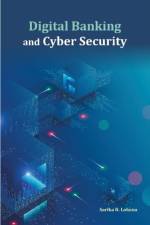av Dr Sarika R Lohana
847
India has a rich diversity of digital payment options. Due to steps taken by the Reserve Bank of India (RBI) to encourage electronic transactions, paper-based systems (cheque, demand draft, bankers cheque, payment order, travellers cheque, interest warrant, dividend warrants, and money order) now constitute a miniscule portion of retail payments. The number of clearing houses has also declined. Card-based electronic payment systems are well-understood at the global and national level, and find acceptance at stores, as well as for online payments. Cards are usually issued by banks and can be classified on the basis of their issuance, usage and payment by the card holder. There are three types of cards: (a) pre-paid cards, (b) debit cards and (c) credit cards. In recent years, non-card electronic payment systems have become very popular. These have, inter alia, included: (a) real time gross settlement (RTGS), (b) national electronic funds transfer (NEFT), (c) electronic clearing services (ECS), (d) immediate payment services (IMPS), (e) unified payments interface (UPI), (f) unstructured supplementary service data (USSD), (g) Aadhaar-enabled payment system (AEPS), and (h) Bharat interface for money (BHIM). Cyber space is vulnerable to a wide variety of incidents, whether intentional or accidental, man-made or natural, and the data exchanged in the cyber space can be exploited for nefarious purposes by both nation-states and non-state actors. Cyber attacks and threats are faced by individuals, businesses and governments. These can take the following forms: (a) phishing, (b) hacking, (c) scamming, (d) sniffing, (e) spoofing and (f) denial of service attack. The only way to protect ourselves from such activities is to be vigilant about our data and protect the data from getting into the hands of scamsters and fraudsters. This book is an informative and descriptive document on the subject of digital banking and cyber security concerns.


